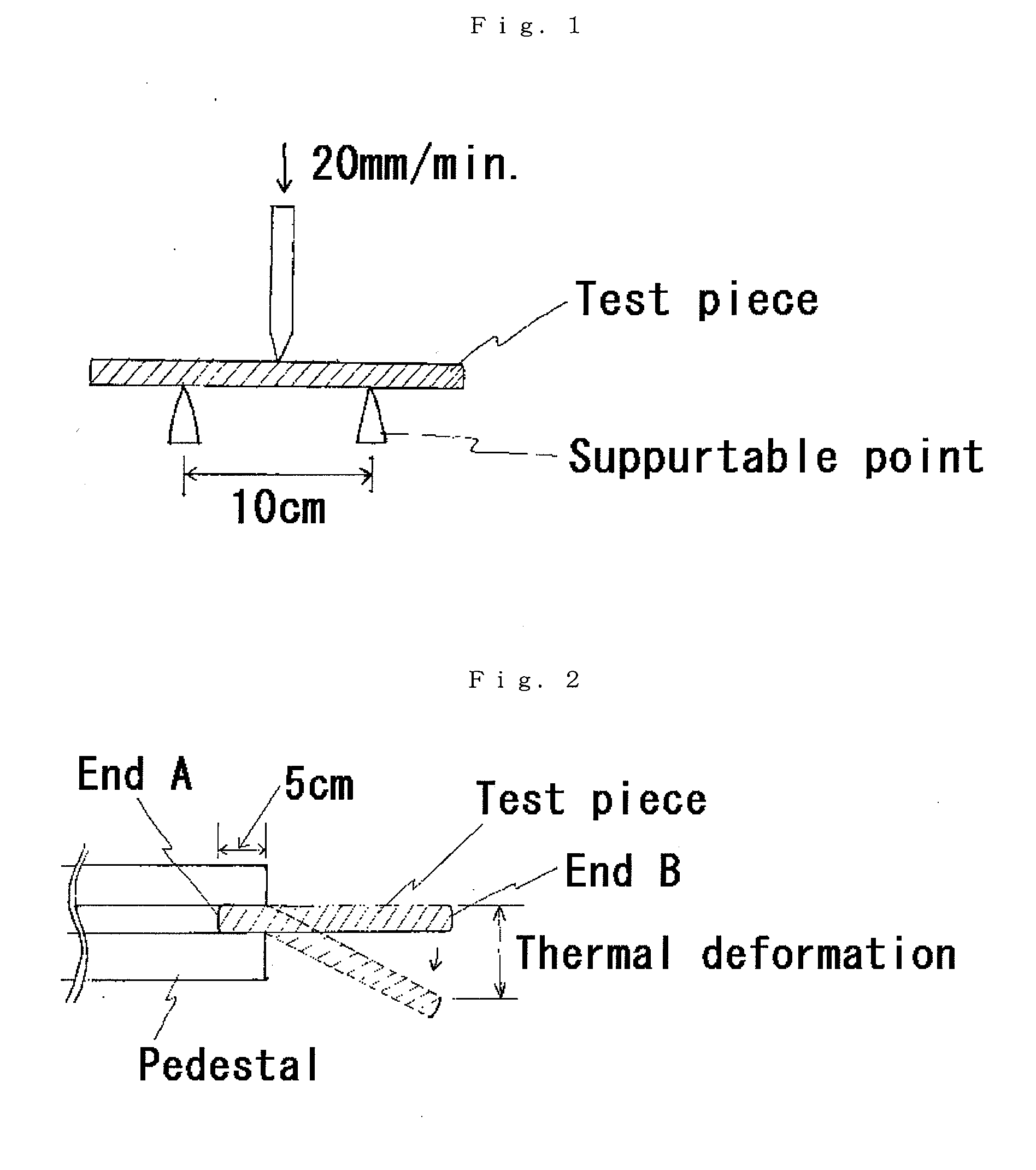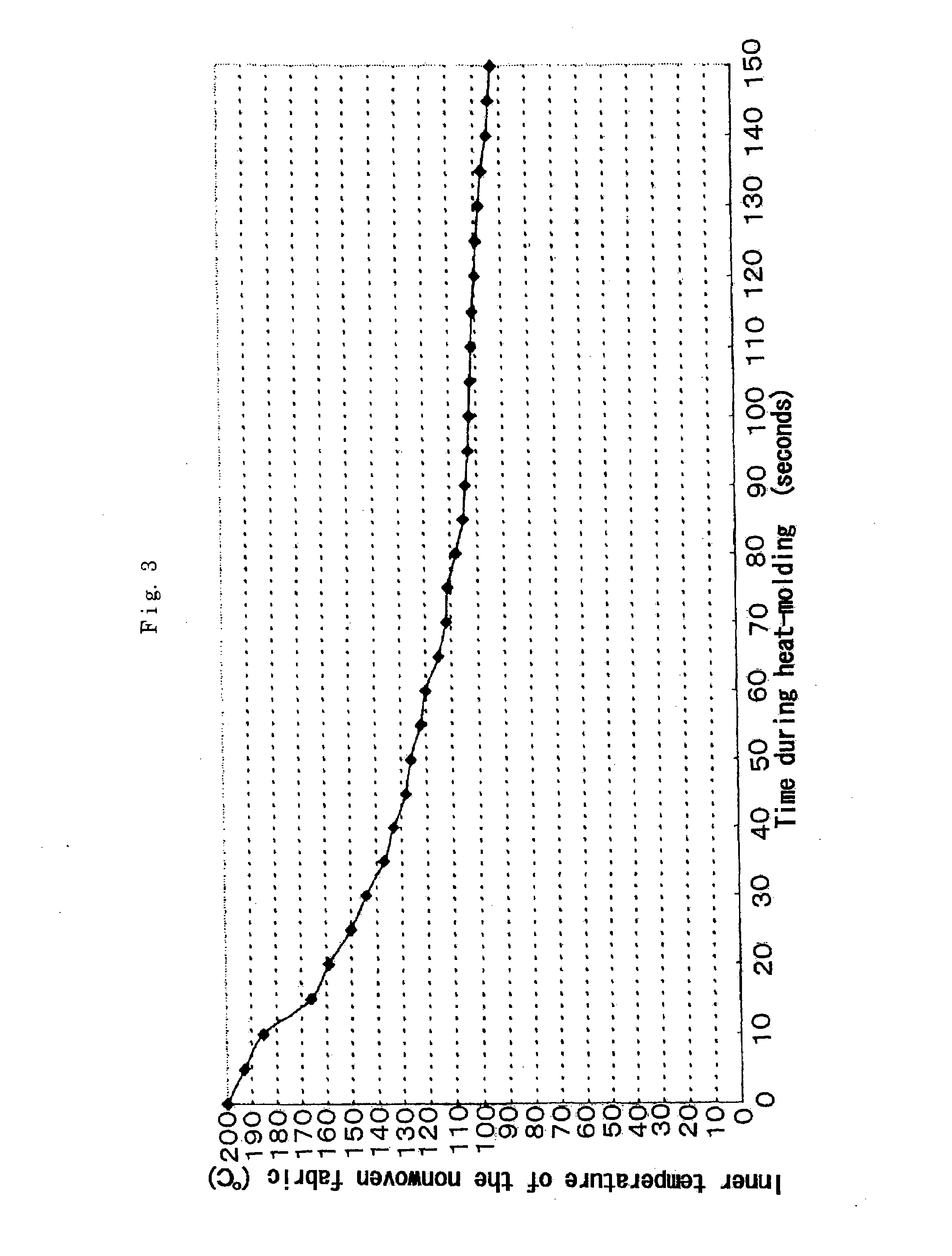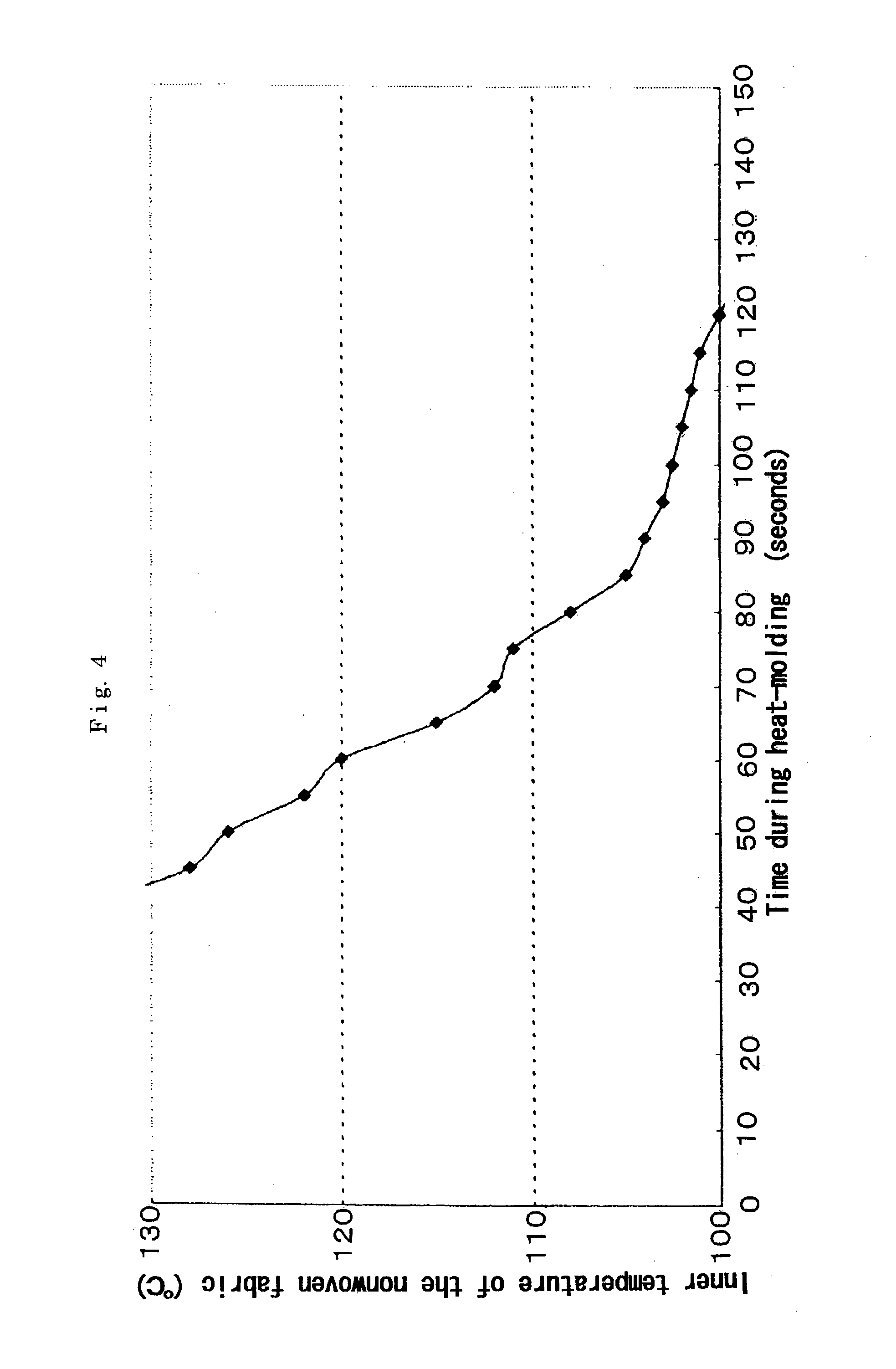Automotive inner ceiling material and molding method thereof
- Summary
- Abstract
- Description
- Claims
- Application Information
AI Technical Summary
Benefits of technology
Problems solved by technology
Method used
Image
Examples
Example
EXAMPLE
[0027]Hereinafter, the invention will be described on the basis of the examples. Please note, however, that the invention is not limited to the examples. It should be appreciated that the invention utilizes the specific property of copolyester and obtains the inner ceiling material which is prevented from deforming at a high temperature by maintaining the inner temperature of the nonwoven fabric at a certain temperature for a certain time period during a heat-molding process. A melting point, heat of fusion, bending strength and thermal deformation are measured as the following methods:
(1) Melting Point (° C.):
[0028]The melting point was measured at a temperature rising at a speed of 20° C. / min., using a differential scanning calorimeter DSC-2 produced by PerkinElmer Co., Ltd.
(2) Heat of Fusion (J / g):
[0029]The heat of fusion was measured at a temperature rising at a speed of 20° C. / min., using a differential scanning calorimeter DSC-2 produced by PerkinElmer Co., Ltd.
(3) Bend...
Example
Example 1
[0033]Dimethyl terephthalate was prepared as acid units. Diol units were also prepared in which ethylene glycol and 1,4-butanediol were mixed at an equal mol ratio. An interesterification and a polycondensation reaction were performed on the acid units and the diol units, wherein the amount of the diol units was 1.3 mol times greater than the acid units, to thereby obtain copolyester having the melting point of 182° C. and heat of fusion of 18.8 J / g. The copolyester and polyethylene terephthalate having the melting point of 225° C. were processed by a melt spinning machine so as to obtain sheath-core type conjugate polyester fibers having a fineness of 2.2 dtex and a length of 51 mm in which the copolyester became the sheaths and the polyethylene terephthalate became the cores at a sheath-core ratio equal to 1:1 (by weight).
[0034]On the other hand, polyethylene terephthalate fibers having a fineness of 17 dtex and a length of 51 mm in length (having the melding point of 225...
Example
Comparative Example 1
[0037]Except that the temperature of the heat-treating the nonwoven fabric was changed to 170° C., an automotive inner ceiling material was prepared under the same conditions as used in example 1. The temperature was lower than the melting point of the sheath of the sheath-core type conjugate fibers made of polyester. Therefore, the sheaths binding the fibers were not melted and could not sufficiently be heat-molded. The inner temperature of the nonwoven fabric was maintained at 100˜130° C. for 60 seconds, which was shorter than that of example 1, because the inner temperature was 170° C. in the beginning of the heat-molding process.
PUM
| Property | Measurement | Unit |
|---|---|---|
| Temperature | aaaaa | aaaaa |
| Temperature | aaaaa | aaaaa |
| Temperature | aaaaa | aaaaa |
Abstract
Description
Claims
Application Information
 Login to View More
Login to View More - R&D
- Intellectual Property
- Life Sciences
- Materials
- Tech Scout
- Unparalleled Data Quality
- Higher Quality Content
- 60% Fewer Hallucinations
Browse by: Latest US Patents, China's latest patents, Technical Efficacy Thesaurus, Application Domain, Technology Topic, Popular Technical Reports.
© 2025 PatSnap. All rights reserved.Legal|Privacy policy|Modern Slavery Act Transparency Statement|Sitemap|About US| Contact US: help@patsnap.com



